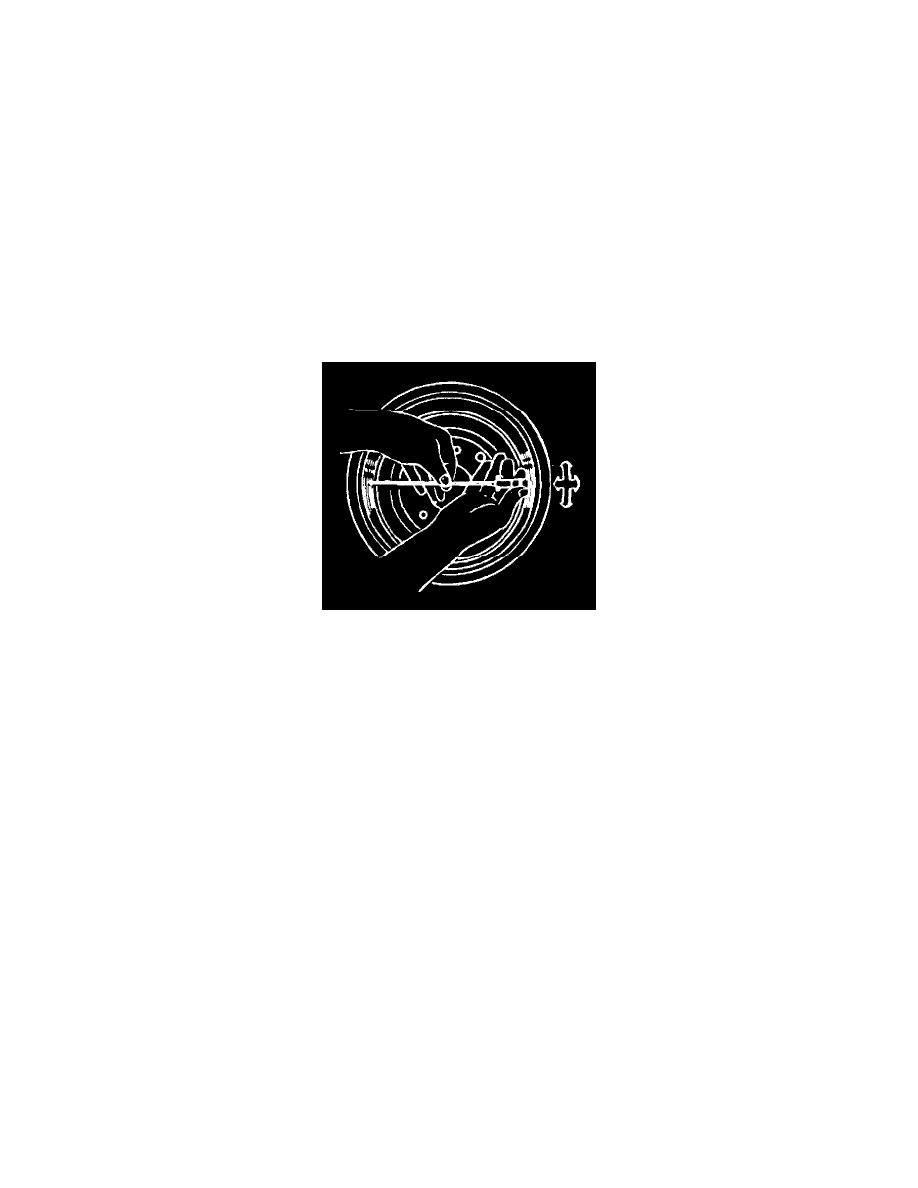Rodeo S 2WD L4-2.2L (1999)

Brake Drum: Testing and Inspection
For brake drum removal information, refer to Brake Shoe / Service and Repair. See: Brake Shoe
BRAKE DRUM INSPECTION AND SERVICE
Whenever the brake drums are removed, they should be thoroughly cleaned and inspected for cracks, scores, deep grooves and out-of-round.
Cracked, Scored Or Grooved Drum
A cracked drum is unsafe for further service and must be replaced.
Do not attempt to weld a cracked drum.
Smooth any slight scores. Heavy or extensive scoring will cause excessive brake lining wear, and it will probably be necessary to machine the drum
braking surface.
If the brake linings are slightly worn and the drum is grooved, the drum should be polished with fine emery cloth but should not be machined. At this
stage, eliminating all the grooves in the drum and smoothing the ridges on the lining would require the removal of too much metal and lining. If left
alone, the grooves and ridges match and satisfactory service can be obtained. If brake linings are to be replaced, a grooved drum should be machined.
A grooved drum, if used with a new lining, will not only wear the lining, but will make it difficult, it not impossible, to obtain efficient brake
performance.
Out-Of-Round Drum
An out-of-round drum makes accurate brake shoe adjustment impossible and is likely to cause excessive wear to other parts of the brake mechanism
due to its eccentric action. An out-of-round drum can also cause severe and irregular tire tread wear as well as a pulsing brake pedal. When the
braking surface of a brake drum exceeds the specification limit of 0.15 mm (0.006 inch) in out-of-round, the drum should be machined to true up the
braking surface. Out-of-round can be accurately measured with an inside micrometer fitted with proper extension rods. When measuring a drum for
out-of-round and wear, take measurements at the open and closed edges of machines surfaces and at right angles to each other.
Maximum out-of-round: 0.15 mm (0.006 inch)
Machining The Drum
If a drum is to be machined, only enough metal should be removed to obtain a true, smooth braking surface. If a drum does not clean-up when
machined to a maximum diameter, it must be replaced. Removal of more metal will affect dissipation of heat and may cause distortion of the drum.
After refinishing, replace any drum that exceeds a maximum inside diameter of 296.5 mm (11.673 inch). Do not use a brake drum that is not within
the specification.
Maximum inside diameter: 296.5 mm (11.673 inch)
